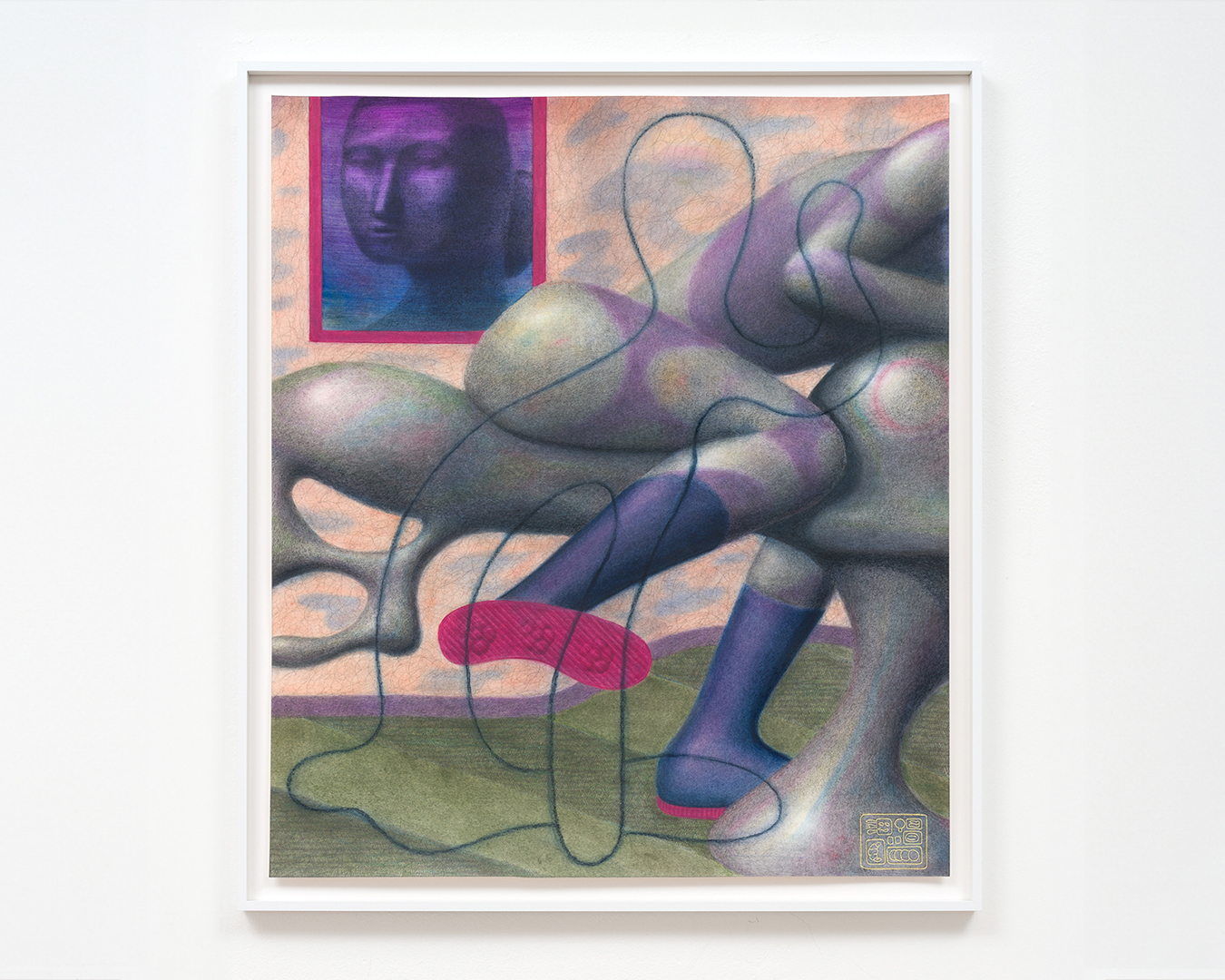Lucas Kaiser’s debut solo exhibition at Weserhalle, titled “Appropriate Illusion,” invites viewers to immerse themselves in the intricate relationship between figure, pictorial space, and observer. This exhibition culminates Kaiser’s profound engagement with sculptural traditions and the act of “creating figures.” Drawing on both historical and contemporary influences—such as Hans Arp, Anna Uddenberg, Barbara Hepworth, Bruce Nauman, Donatello, Louise Bourgeois, Brancusi, Tony Cragg, and Henry Moore—Kaiser reimagines virtual concepts into tangible forms.

Kaiser’s work oscillates between two-dimensional representations and simulated plasticity, forging a space that blurs the lines between abstraction and naturalism, and identification and empathy. A central theme in his work is guiding the viewer along the threshold of empathy, with a particular focus on the concept of the “uncanny valley.” This theory posits that as a human-like figure becomes more realistic, it can elicit feelings of eeriness and discomfort when it is almost, but not quite, lifelike. Kaiser’s pieces navigate this delicate interplay of proximity and distance, inviting viewers to experience both connection and detachment.
To enhance the viewer’s need to constantly reassess their position relative to his work, Kaiser builds layers into his artwork. These layers add depth and complexity, compelling continual engagement and perspective shifts. They also slow down the viewing process as only after a certain amount of time the details start to unfold and the viewer needs a moment to unpack the work.

Kaiser examines several dichotomies in his work: figures as illustrations (e.g., pictograms) versus figures as simulations of counterparts with plastic traits; figures as stimuli for form-finding versus figures as depictions of potentially real persons; two-dimensional versus three-dimensional representations, images as windows, and explorations of the trompe l’oeil technique; and when a figure becomes something associated with humanity. His fascination lies in juxtaposing the uncanny with aesthetic allure, built on a meticulously calculated relationship between the figure and pictorial space. By engaging with clichés of the idyllic, he seeks aesthetic innovations through formal interventions that disrupt familiar realms.
“Appropriate Illusion” offers a profound reflection on the artistic process, urging viewers to question their perceptions of reality and representation with the concept of the “figure” at its center.
Lucas Kaiser is based in Leipzig, born in 1994. He graduated from HGB Leipzig and is known for his exploration of the contrast between the uncanny and aesthetic in his work. Kaiser focuses on clichés associated with the idyll, aiming to reinvent them through formal interventions that disrupt familiarity. He is interested in the polarity between generic and special, influencing his approach to figure representation. Kaiser hand-draws his figures, deliberately contaminating the generalisation of the human figure in his art.

